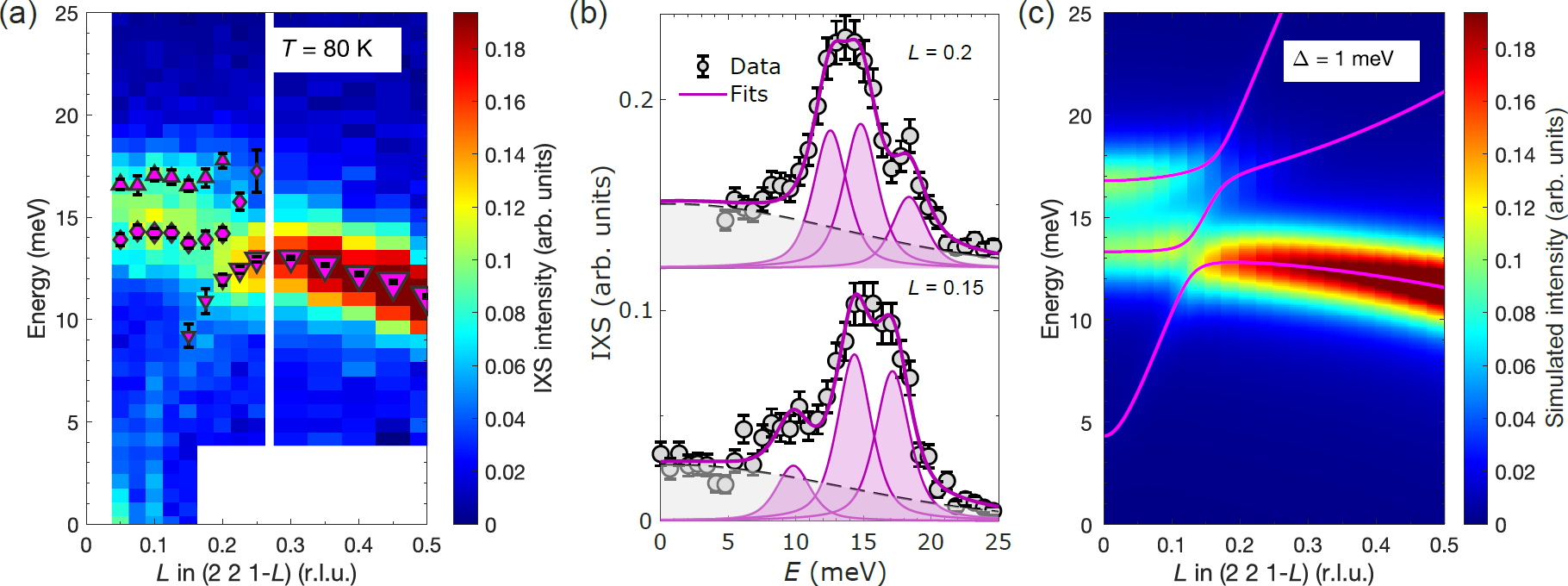주메뉴
- About IBS 연구원소개
-
Research Centers
연구단소개
- Research Outcomes
- Mathematics
- Physics
- Center for Underground Physics
- Center for Theoretical Physics of the Universe (Particle Theory and Cosmology Group)
- Center for Theoretical Physics of the Universe (Cosmology, Gravity and Astroparticle Physics Group)
- Dark Matter Axion Group
- Center for Artificial Low Dimensional Electronic Systems
- Center for Theoretical Physics of Complex Systems
- Center for Quantum Nanoscience
- Center for Exotic Nuclear Studies
- Center for Van der Waals Quantum Solids
- Center for Relativistic Laser Science
- Chemistry
- Life Sciences
- Earth Science
- Interdisciplinary
- Center for Neuroscience Imaging Research (Neuro Technology Group)
- Center for Neuroscience Imaging Research (Cognitive and Computational Neuroscience Group)
- Center for Algorithmic and Robotized Synthesis
- Center for Genome Engineering
- Center for Nanomedicine
- Center for Biomolecular and Cellular Structure
- Center for 2D Quantum Heterostructures
- Institutes
- Korea Virus Research Institute
- News Center 뉴스 센터
- Career 인재초빙
- Living in Korea IBS School-UST
- IBS School 윤리경영


주메뉴
- About IBS
-
Research Centers
- Research Outcomes
- Mathematics
- Physics
- Center for Underground Physics
- Center for Theoretical Physics of the Universe (Particle Theory and Cosmology Group)
- Center for Theoretical Physics of the Universe (Cosmology, Gravity and Astroparticle Physics Group)
- Dark Matter Axion Group
- Center for Artificial Low Dimensional Electronic Systems
- Center for Theoretical Physics of Complex Systems
- Center for Quantum Nanoscience
- Center for Exotic Nuclear Studies
- Center for Van der Waals Quantum Solids
- Center for Relativistic Laser Science
- Chemistry
- Life Sciences
- Earth Science
- Interdisciplinary
- Center for Neuroscience Imaging Research (Neuro Technology Group)
- Center for Neuroscience Imaging Research (Cognitive and Computational Neuroscience Group)
- Center for Algorithmic and Robotized Synthesis
- Center for Genome Engineering
- Center for Nanomedicine
- Center for Biomolecular and Cellular Structure
- Center for 2D Quantum Heterostructures
- Institutes
- Korea Virus Research Institute
- News Center
- Career
- Living in Korea
- IBS School
News Center
IBS Researchers Directly Demonstrate Unusually Strong Magnon-Phonon Coupling in Kagome Antiferromagnet Mn3GeA new study from the Institute for Basic Science (IBS) in South Korea reveals that lattice and magnetic subsystems are strongly coupled in the semimetal Mn3Ge. The simplicity of the crystal structure of Mn3Ge allows for clear identification of the hybrid magnon-phonon quasiparticles, bridging theoretical predictions and experimental observations. Coherent conversion between spin waves and vibrational degrees of freedom could have significant implications for the field of spintronics. Mn3Ge consists of alternating kagome layers of magnetic Mn ions with Ge ions filling the respective voids. This material is proposed as a topological Weyl semimetal. Its unusual transport properties, for instance, large anomalous Hall effect, attract close attention from many research groups. From the magnetic point of view, it reveals a 120° long-range antiferromagnetic order with the Néel temperature well above room temperature. Previous neutron studies pointed to unexpected resonance excitations in the Brillouin zone center, which were speculated to have their origin in a weak admixture of magnon spectral weight to optical phonons. Yet the physical mechanisms that could lead to such resonances in neutron scattering remained unclear. In the new paper, Dr. Aleksandr SUKHANOV (University of Augsburg, Germany), Dr. Oleg UTESOV (Senior Researcher, PCS IBS), and co-authors used high-brilliance synchrotron radiation at ESRF (Grenoble, France) to probe lattice vibrations (phonons) in Mn3Ge to directly demonstrate the anti-crossing behavior in its spectrum. Ab initio calculations were carried out to identify relevant atomic displacements. The next step in understanding the material was the construction of a minimal microscopic model of its magnetic subsystem, which revealed the relevant spin fluctuations. The relative simplicity of the kagome structure in Mn3Ge makes scrutinizing spin-lattice coupling feasible. It turns out that displacements of the magnetic ions lead to the emergence of effective transverse fields due to the noncollinear orientation of magnetic moments within the kagome planes. This so-called exchange striction allows for bilinear coupling between phonons and magnons, which creates magnon-polaron quasiparticles. “In Mn3Ge, manganese ions carry the magnetic moment and vibrate, and the role of germanium ions is negligible. This makes calculations within the minimal theoretical model reliable. In particular, we accurately estimate the hybridization gap clearly resolved in the experimental spectrum,” Dr. Utesov explained. The work shows that Mn3Ge can serve as a model system for exploring magnon-phonon interactions. It also suggests that noncollinear kagome antiferromagnets can be considered a fruitful platform for studying the magnon-polarons and spin-lattice coupling in general.
Notes for editors
- References
- Media Contact
- About the Institute for Basic Science (IBS) |
| Next | |
|---|---|
| before |
- Content Manager
- Public Relations Team : Yim Ji Yeob 042-878-8173
- Last Update 2023-11-28 14:20












